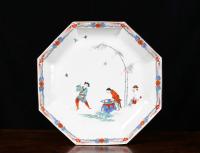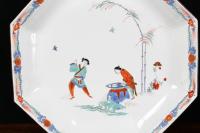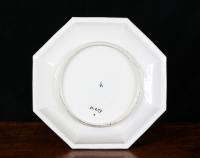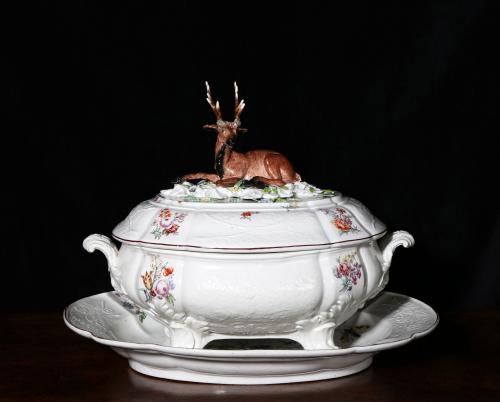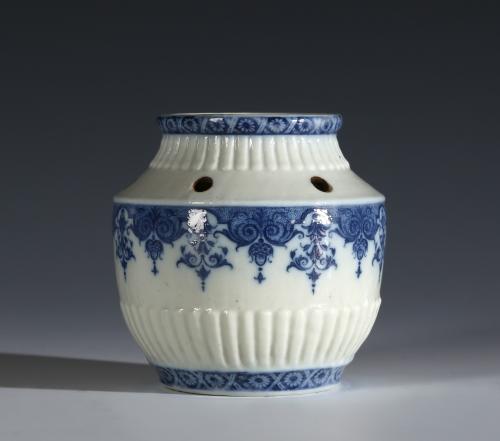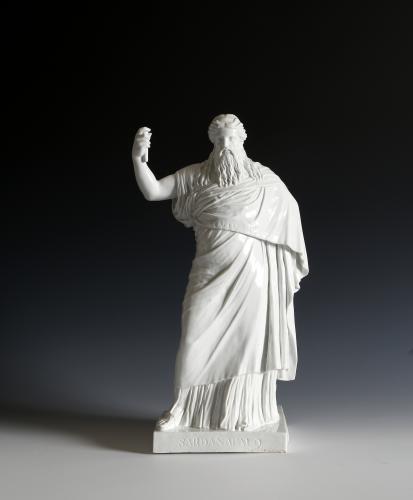
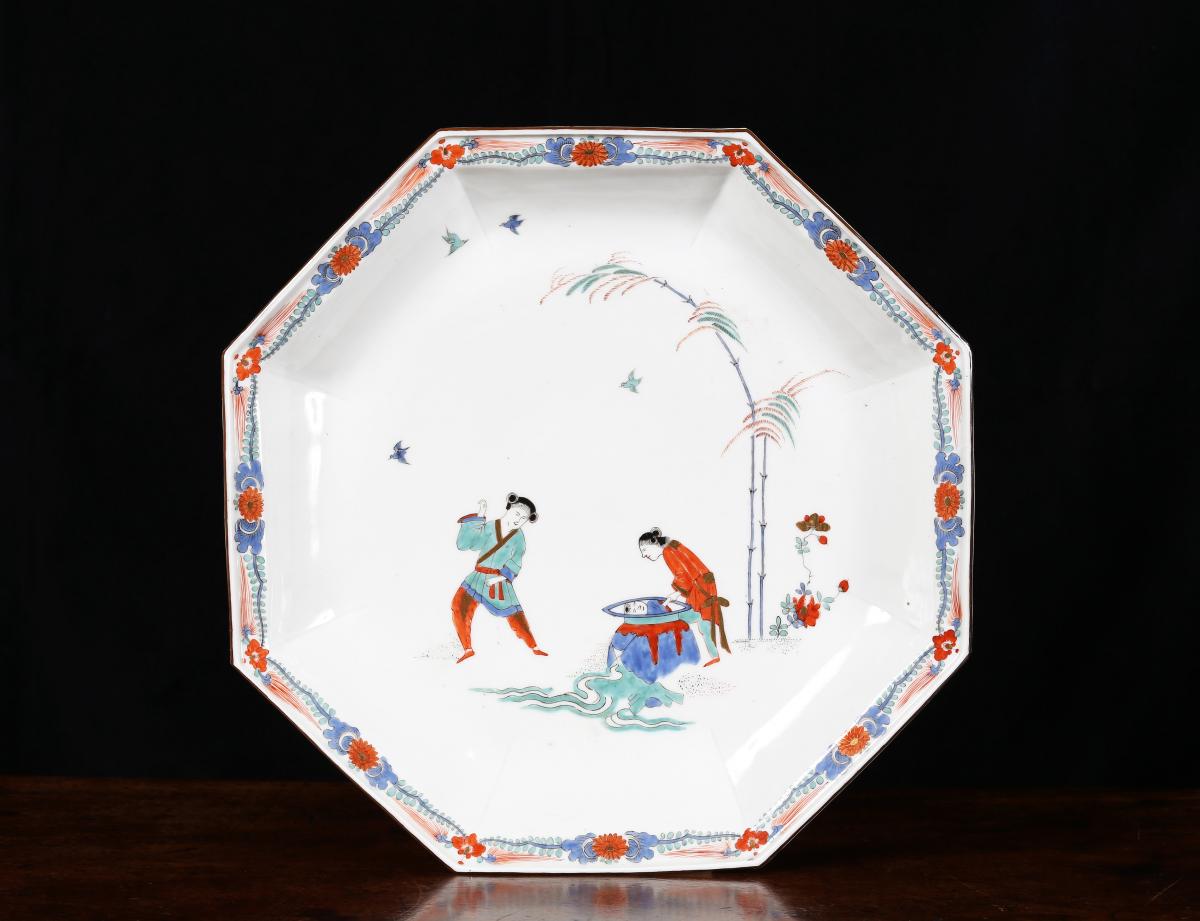
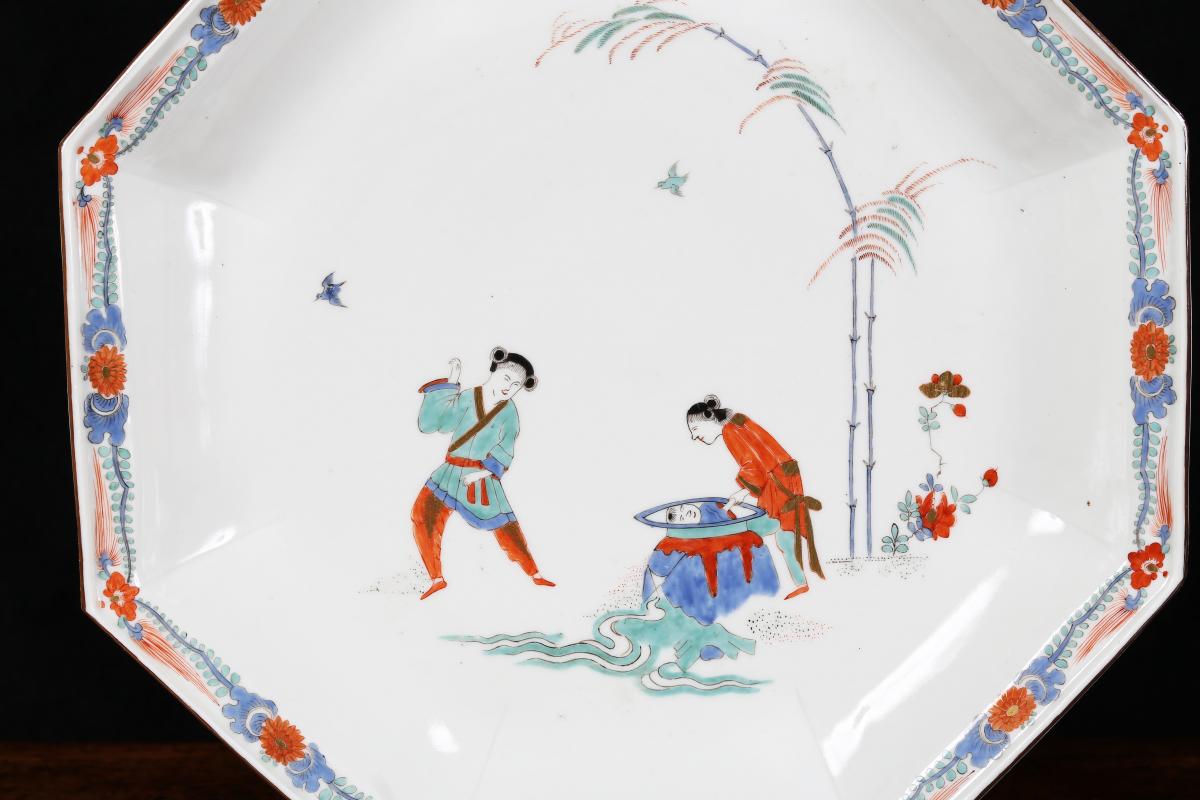
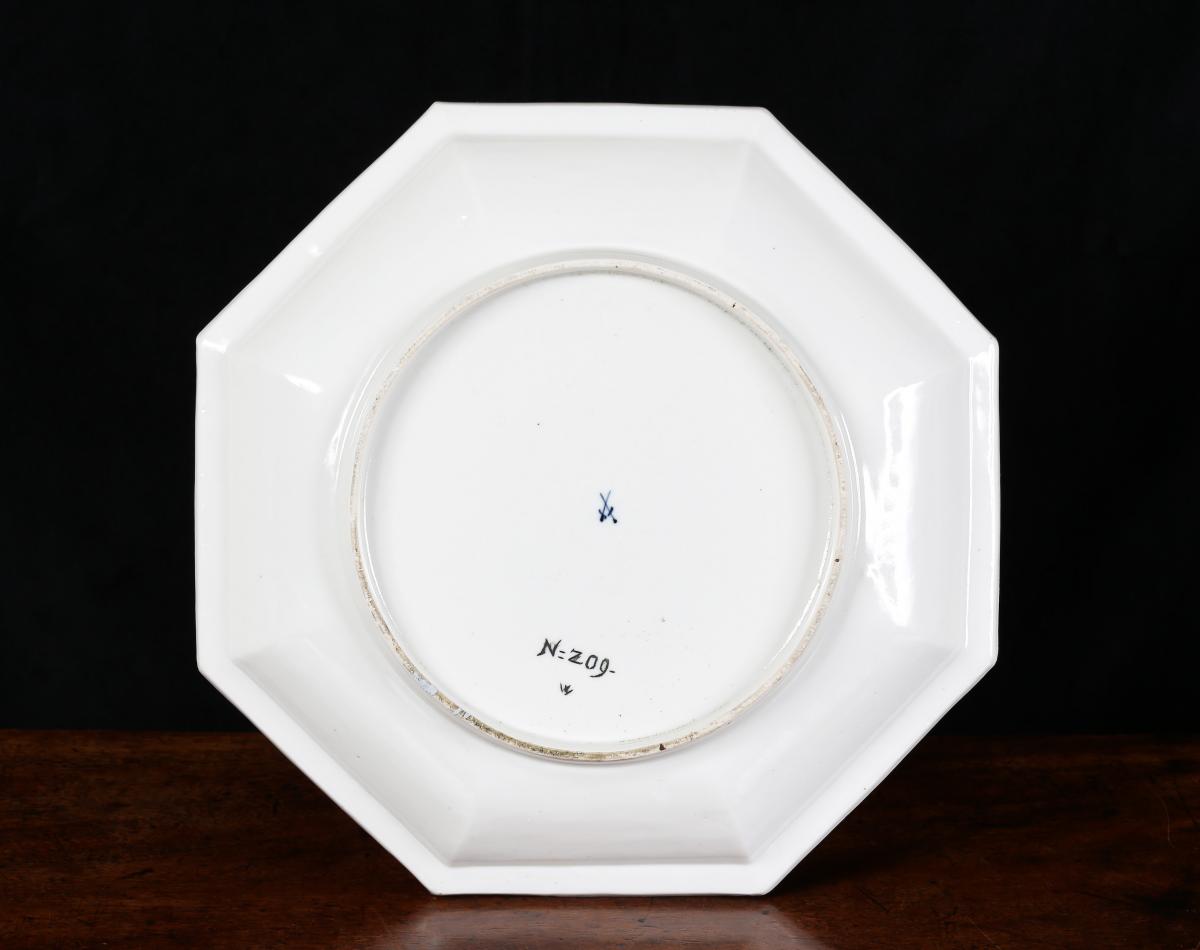
Price
£65000.00This object is eligible for a Certificate of BADA Provenance
The BADA Standard
- Since 1918, BADA has been the leading association for the antiques and fine art trade
- Members are elected for their knowledge, integrity and quality of stock
- Our clients are protected by BADA’s code of conduct
- Our dealers’ membership is reviewed and renewed annually
- Bada.org is a non-profit site: clients deal directly with members and they pay no hidden fees
Underglaze blue crossed swords mark
Incised Japanese Palace Inventory mark: N=209 – W
Circa 1735
This is a precise copy of a Japanese Kakiemon dish of circa 1690 that depicts a famous case of lateral thinking taken from an episode of the childhood of the Song Dynasty Chinese historian Sima Guang known in Japan as Shiba Onko. A child was drowning in a large water jar and attempts to pull him out failed, the resourceful Shiba Onko threw a rock to smash the pot and saved the boy. The pattern in England came to be known as ‘Hob in the Well’.
This is the largest size of this design produced at Meissen. In the Royal Saxon Inventory of the Japanese Palace of 1770, five of this size were listed under N=209-W.
Klaus Bolz, Keramos 153, July 1996, page 80:
‘Fünf Stück 8.eckichte Confect-Schaalen, mit breiten überschlagenen braunen Rande, inwendig aber mit Pagoden, Blumen and Bäumen gemahlt, 2 ¼. Zoll hoch, 13 ½. Zoll
in Diam: No. 209’
(‘Five pieces. 8-sided desert dishes, with broad everted rim with brown edges, painted on the inside with pagods, flowers and trees, 2¼. Zoll high, 13 ½. Zoll Diam: No.209’)
Julia Weber states that examples of this pattern were ordered by Count Hoym for Rudolph Lemaire and were sent from the manufactory at the end of 1734. In July 1737 another 16 dishes of various sizes of Shiba Onko pattern were added to the Royal Collection and were given inventory numbers 209 to 211. Our dish is one of these and, we believe, the largest remaining in private hands. A 25.2 cm. plate incised N=211-W from the Franks Collection (no. 28) is in the British Museum.
The pair to this dish which came from the same collection and was sold Sotheby’s, London, 4 June 1996, lot 58, is illustrated in Frühes Meissener Porzellan, Kostbarkeiten aus deutschen Privatsammlungen, Hirmer, 1997, page 186, fig. 151 and is now in the Hetjens Museum, Düsseldorf.
Reference:
Julia Weber, Meißener Porzellane mit Dekoren nach ostasiatischen Vorbildern: Stiftung Ernst Schneider in Schloss Lustheim, 2013, Vol. II, p. 138
Provenance:
Royal Collections of Saxony
With Galerie Jürg Stuker, Berne, 1951
Sotheby’s London, 4 June 1996, lot 57 (along with its pair lot 58 which is now in the Hetjens Museum)
Private collection
Dimensions
32.4 cm across; 34.8 cm from point to pointCondition report
Perfect, no restorationThe BADA Standard
- Since 1918, BADA has been the leading association for the antiques and fine art trade
- Members are elected for their knowledge, integrity and quality of stock
- Our clients are protected by BADA’s code of conduct
- Our dealers’ membership is reviewed and renewed annually
- Bada.org is a non-profit site: clients deal directly with members and they pay no hidden fees


